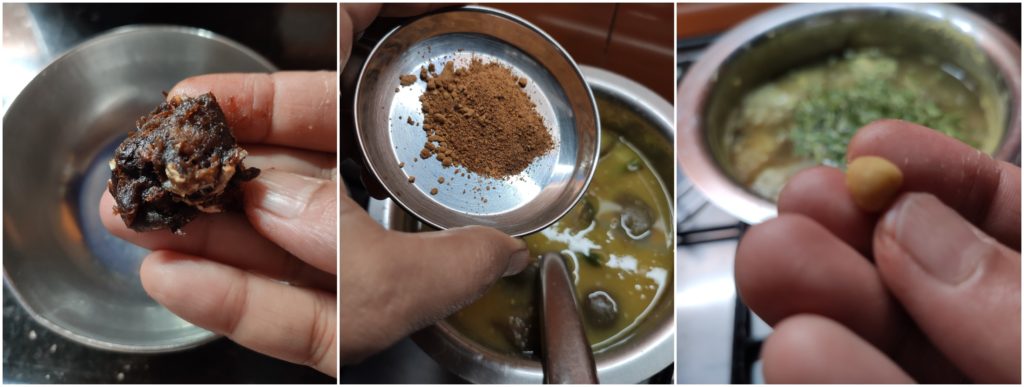Our Thovve is nothing but dali thoye, a delicacy of the Konkani household. With Idli or buns,thovve is somewhat the most loved combo of my husband and his family. Over the years, even I have started to relish this combo as much as they do.
According to my father-in-law, tempering is the basis of any dish. Here, cooked toor dal is boiled and added with a liberal tempering. As we have now monsoon season, it is a most comforting and soothing meal option for us.

Ingredients:
Toor dal – 1 cup
Turmeric powder – ½ tsp
Green chillies – 2 (slit)
Salt
Hing – ¼ + ¼ tsp
Ghee or coconut oil – 1 tbl spoon
Mustard – 1 to 2 tsp
Red chillies – 1 or 2
Curry leaves
Method:
-I prefer to soak toor dal in advance to get a smooth texture. Wash the dal, add sufficient water, and collect and discard all the foamy froth which forms at the upper surface.

-Now, before closing the cooker lid, put turmeric, green chillies and a tsp of coconut oil or ghee and cook for 3 to 4 whistles with sufficient water.

-Mash the dal, and adjust the consistency by adding extra water. Add salt, ¼ tsp of hing and nicely boil.
-Now, do the tempering. Heat oil or ghee, crackle mustard, hing, red chillies, and curry leaves and pour over the boiled dal.
-Close the lid for some time and allow it to seep in all the flavours. Serve with Idli or buns.
NOTE:
-Soaking the dal and skimming (removing the foam) is optional. It does change the taste of the final product. Hence, I follow the process.







